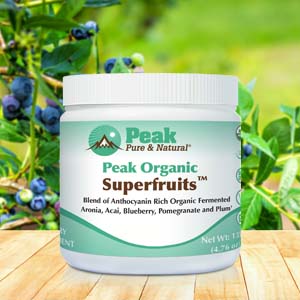Get Easy Health Digest™ in your inbox and don’t miss a thing when you subscribe today. Plus, get the free bonus report, Mother Nature’s Tips, Tricks and Remedies for Cholesterol, Blood Pressure & Blood Sugar as my way of saying welcome to the community!
The beverage that helps prevent calcified arteries

Sometimes I regret not being a coffee drinker. I fear I may be missing out on coffee’s numerous health benefits, such as improved longevity, liver protection and lower diabetes risk.
But I really shouldn’t worry. It turns out tea, my drink of choice, gives coffee some stiff competition as far as healthy beverages go…
For one thing, tea is loaded with flavonoids, naturally occurring compounds that act as antioxidants to neutralize free radicals that contribute to chronic disease.
Tea also contains L-theanine, an amino acid that’s only found in tea and some mushrooms. L-theanine helps promote good mental function, and when combined with the caffeine in tea, can benefit attention task performance.
It’s also been reported to strengthen the immune system and assist in weight loss. And drinking 1 to 2 cups of tea every day could significantly reduce the risk of diseases like vascular dementia, Alzheimer’s disease, stroke and cardiovascular disease.
And the most recent research found some stunning news about tea and artery health…
The connection between tea and heart health
When specifically looking at black tea’s heart benefits, researchers have found a link between its flavonoid content and reduced risk of abdominal aortic calcification (AAC).
The abdominal aorta is the largest artery in the body. It supplies oxygenated blood from the heart to the abdominal organs and lower limbs, and its calcification can predict cardiovascular risks such as heart attack and stroke.
AAC also has been found to be a reliable indicator for late-in-life dementia.
Researchers at Edith Cowan University (ECU) in Australia studied elderly women with a median age of 80. The study found these women were far less likely to have an extensive buildup of AAC if they consumed a high level of flavonoids in their diet.
Ben Parmenter, an ECU researcher and study lead, says while the participants consumed many dietary sources of flavonoids, some had particularly high amounts.
“In most populations, a small group of foods and beverages — uniquely high in flavonoids — contribute the bulk of total dietary flavonoid intake,” he says. “The main contributors are usually black or green tea, blueberries, strawberries, oranges, red wine, apples, raisins/grapes and dark chocolate.”
In the ECU study, black tea was the main source of flavonoids. Participants who drank 2 to 6 cups of tea per day had a 16 to 42 percent lower chance of having extensive AAC compared to those who did not drink tea at all.
Certain other dietary sources of flavonoids such as fruit juice, red wine and chocolate did not show the same beneficial association with AAC.
Still, Parmenter notes that out of the women who didn’t drink black tea, higher total non-tea flavonoid intake also appeared to protect against extensive artery calcification. And previous studies have already shown flavonols are great for healthy blood pressure.
“This implies flavonoids from sources other than black tea may be protective against AAC when tea is not consumed,” he says. This is important, he adds, because in other populations or groups of people black tea may not be the main source of flavonoids.
Specific flavonoids that target AAC
When looking at specific types of flavonoids, flavan-3-ols and flavonols appeared to have a significant relationship with AAC. Those who had a higher intake of total flavonoids, flavan-3-ols and flavonols were 36 to 39 percent less likely to have extensive AAC.
If you don’t drink tea, now might be a good time to start to protect your health later in life. But if you really dislike the beverage, try adding other flavonoid-rich foods to your diet so protect your heart health and stave off dementia.
A good place to start is with blueberries, dark chocolate and cranberries, all of which are excellent sources of flavonoids.
Experts recommend getting about 500 mg of flavonoids a day, roughly the amount in 1-2 cups of tea or 100 grams (1 cup) of blueberries.
What about coffee?
Interestingly, coffee also contains flavonoids like flavan-3-ols and flavonols, but in much smaller amounts than tea and other flavonoid-rich foods. That means you may not get the same flavonoid-associated benefits from coffee that you would from tea.
Editor’s note: Have you heard of EDTA chelation therapy? It was developed originally to remove lead and other contaminants, including heavy metals, from the body. Its uses now run the gamut from varicose veins to circulation. Click here to discover Chelation: Natural Miracle for Protecting Your Heart and Enhancing Your Health!
Sources:
Put the kettle on! How black tea (and other favourites) may help your health later in life — Edith Cowan University
Higher Habitual Dietary Flavonoid Intake Associates With Less Extensive Abdominal Aortic Calcification in a Cohort of Older Women — Arteriosclerosis, Thrombosis, and Vascular Biology
5 Types of Tea That May Help With Weight Loss — Everyday Health
USDA Database for the Flavonoid Content of Selected Foods — U.S. Department of Agriculture
Flavonoid research — Edith Cowan University














